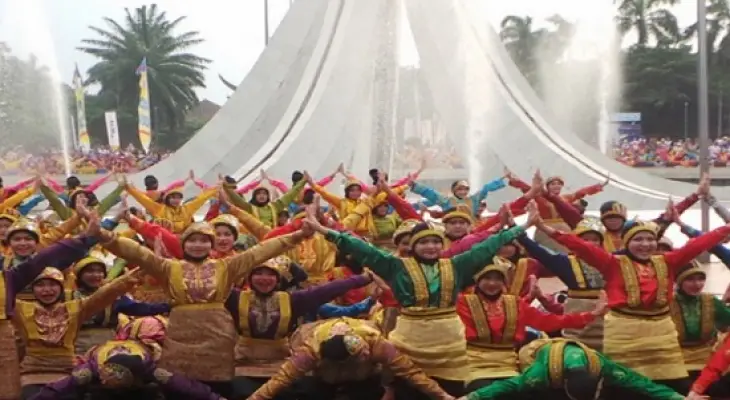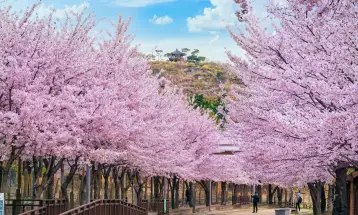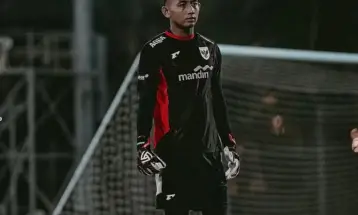Ratoh Jaroe, Religious Dance from Aceh

Holiday Ayo - Ratoh Jaroe is the name of a traditional dance from Aceh Province of Indonesia. The name came from the words “ratoh” which means talking, and “jaroe” which means fingers. It means that this dance tells a story through the movements of one’s fingers.
As cited from Indonesiakaya.com, Ratoh Jaroe Dance was created by Yusri Saleh, an artist from Aceh, in 2000. But the name “ratoh jaroe” itself came from Khairul Anwar, the choreographer from Aceh who had worked with him.
Yusri Saleh, also known as Dek Gam, created Ratoh Jaroe Dance, by mixing various characteristics from other traditional dances from Aceh, such as ratoh duek, rateb meusakat, rapai geleng, and likok pulo. The music was then added, using rapai, a traditional percussion instrument in Aceh, along with vocal. The dance is performed by female dancers because it shows the characteristics of the women in Aceh.
“Ratoh Jaroe Dance represents the spirit and grace of Aceh women who are known for their toughness since a long time ago. Brave, determined, persistent, militant, and very unifued with each other,” as cited from Jakarta Encyclopedia.
According to Riska Gebrina in a research titled “The Performance of Ratoh Jaroe Creative Dance in Aceh Nusantara Culture Studio”, Ratoh Jaroe Dance was made to lift the spirit of Aceh citizens from a slump, whether caused by conflicts or natural disasters. This dance is also a medium to preach about Islam, with many of its verses being praises for the God.
“(One of) the function of Ratoh Jaroe Dance is as a preaching medium that represents the values of education, religion, politeness, heroism, solidarity, and togetherness, that are show through the finger movements of the dancers,” writes Riska.
Usually Ratoh Jaroe is performed during traditional events as a form of entertainment. The theme varies but they are all about the lives of the people. The story can be sad, happy, or carrying some sort of moral advice.
Ratoh Jaroe consists of around 33 movements and they are mostly done by the upper part of the body, especially hands, arms, and head. The dance is performed in sitting position, the movements following the singing and the rhythm from the rapai. The rhythm is faster compared to other traditional dances of Aceh.








Leave a comment